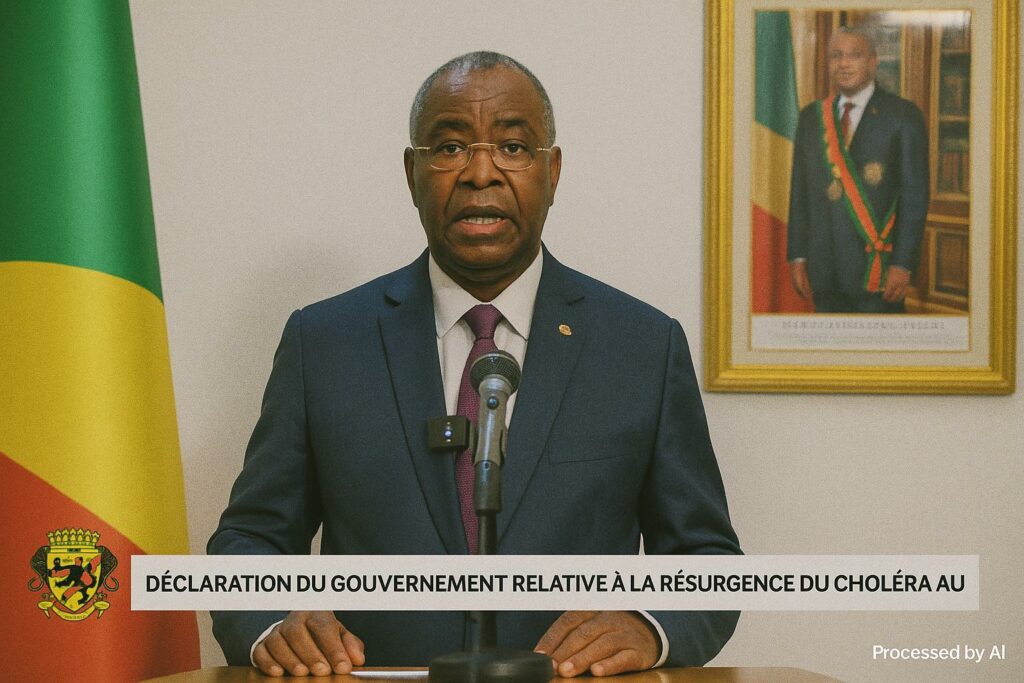A Fragile Delta Confronts an Age-Old Pathogen
When health agents stationed along the braided channels of the Congo River began reporting clusters of acute watery diarrhoea in early July, memories of previous regional epidemics resurfaced instantly. Within days, the national laboratory confirmed Vibrio cholerae O1, serotype Ogawa, in two of three specimens collected on Mbamou Island, a densely populated riparian district that sits administratively within Brazzaville yet remains physically separated by water from the capital’s main banks. The Ministry of Health and Population, led by Dr Jean-Rosaire Ibara, accordingly declared an epidemic on 26 July, in line with International Health Regulations (WHO, 2025 Situation Report).
By the close of the first epidemiological week, 103 suspected cases and 12 probable deaths had been tallied. Though numerically modest compared with historic Central African surges, the attack rate on an island of barely 15 000 inhabitants raised concern among epidemiologists, particularly against the backdrop of rising caseloads in Angola’s Cabinda enclave and across the river in Kinshasa (UNICEF Congo Field Note, July 2025).
Government Mobilisation and Incident Command
The Congolese authorities responded with a multi-sector ‘riposte renforcée’, drawing on lessons internalised during recent Ebola and COVID-19 operations. An incident command centre was activated in Brazzaville, coordinating health, water, security and communication portfolios under a single operational plan. Mobile treatment units were ferried to the island, each staffed with clinicians trained in WHO case-management protocols and equipped with oral rehydration salts, Ringer’s lactate and second-line antibiotics such as doxycycline. Chlorination points now punctuate river-landing sites, and public criers—trusted relay actors in the Congolese risk-communication tradition—broadcast hygiene advisories in Lari, Kituba and Lingala.
Senior officials underscore that the President’s commitment to health security remains undiminished. ‘The Head of State has instructed that no logistical or financial barrier hinder the containment of this outbreak,’ affirmed Health Minister Ibara during a press availability, adding that supplemental budget lines had already been authorised through the Ministry of Finance for emergency procurement.
Community Engagement: The First Line of Containment
Public-health interventions in riverine contexts often founder on trust deficits, yet Mbamou’s traditional leaders swiftly aligned with national directives. Village chiefs now chair daily ‘councils of vigilance’ in which suspected cases are referred to clinicians before household contacts receive prophylactic chlorine tablets. Religious congregations have suspended communal meals, and fishermen agree to stagger market hours to prevent overcrowding around shallow wells—an early demonstration that behavioural measures can be adopted without coercion when messaging is coherent.
International partners amplify these efforts. UNICEF distributes ceramic water filters to maternity wards, while the International Federation of Red Cross Societies oversees safe burials respectful of local rites. Crucially, all interventions are channelled through district health teams, reinforcing state ownership rather than supplanting it.
Regional Epidemiology and Diplomatic Resonance
Cholera’s renewed circulation along the Congo Basin illustrates how ecological, climatic and political borders seldom align. A La Niña-associated rise in river level has inundated latrines across both banks, and transboundary commerce continues apace among Brazzaville, Kinshasa and Cabinda. Against this canvas, the Congolese government’s transparent notification to the WHO drew favourable comment from neighbouring ministries, bolstering Brazzaville’s reputation as a reliable interlocutor in regional health diplomacy.
Cameroon and Gabon have already pre-positioned RDT kits at frontier posts, and the Southern African Development Community’s Health Desk praised Congo-Brazzaville for ‘prompt case detection and exemplary data sharing’ (SADC Communiqué, August 2025). Such peer recognition carries political weight at a moment when cross-border health threats increasingly intersect with security agendas on the continent.
Prospects, Preparedness and Long-Term Resilience
Scientists at the Centre de Recherche sur les Maladies Infectieuses de Makélékélé caution that cholera elimination on Mbamou will require structural investments long after the epidemiological curve flattens. Only one household in three currently boasts an improved water source, and seasonal flooding is projected to intensify under most climate-change scenarios. Yet the present episode has catalysed momentum for infrastructure financing: discussions are under way with the African Development Bank for a compact river-water treatment plant and with the Japan International Cooperation Agency for solar-powered cold-chain units.
For the diplomatic community, the outbreak offers a case study in health security governance. It illustrates the delicate equilibrium between urgency and stewardship, sovereignty and solidarity. While forty-eight-hour laboratory turn-around and real-time situation reports underscore modern readiness, the decisive factor remains the population’s adherence to time-honoured hygiene principles. Vigilance, as the minister remarks, is neither a slogan nor a temporary drill but a civic habit that sustains national resilience.

